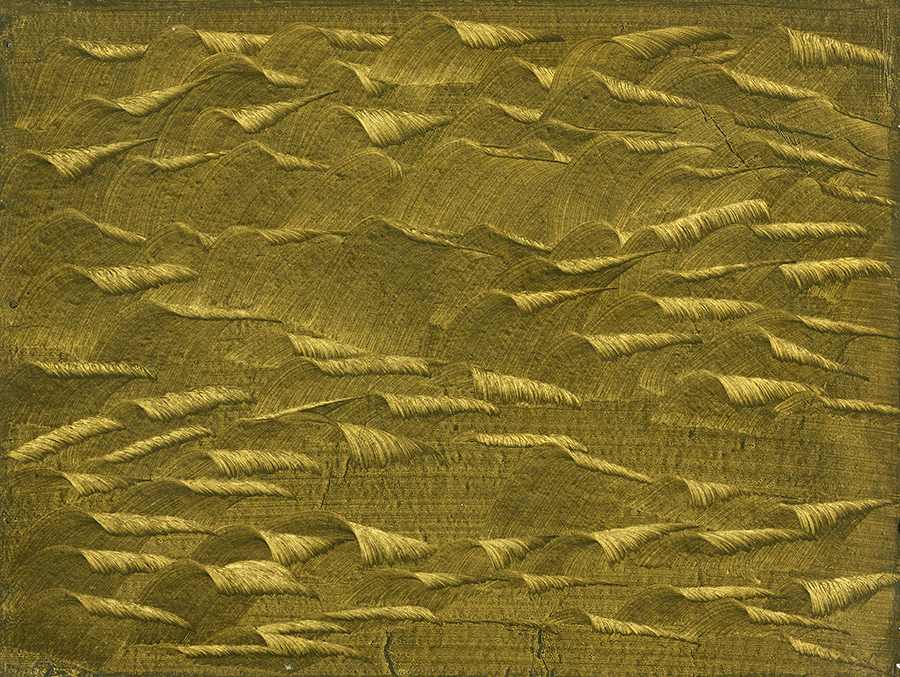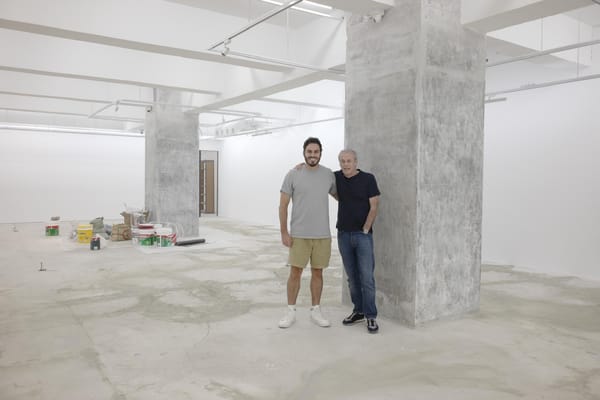People
Independence Day: Conversation with Cho Yong Ik


Throughout seven decades of art making, Korean artist Cho Yong Ik has paved his own way. Among his peers in the monochrome Dansaekhwa movement, the 82-year-old’s energetic abstractions of lyrical scratches, whisks and flicks are typical in some ways, with their focus on process and material, painterly surfaces and systematic organization, yet unique in their permission of color. This approach has earned Cho a recent solo exhibition at Seoul’s Sungkok Art Museum as well as shows at the Samsung Museum of Art, National Museum of Modern and Contemporary Art Seoul and Gwacheon, and the Fukuoka Museum of Art in Japan, plus international biennials including Paris (1961, 1969) and São Paulo (1967).
In Hong Kong for one week surrounding his self-titled solo exhibition of works from the 1970s through the ‘90s, at Edouard Malingue Gallery, Cho mused about his rebellious early days as a young upstart, his deeply-ingrained Korean nostalgia, and his ongoing resistance to pressures from an art market that is suddenly lavishing him with attention. Cho’s interview with ArtAsiaPacific was a family affair, with his son, Cho Sung-Yo, also present. Asked about the chronology of his father’s work, Cho Sung-Yo remarked that “people often draw a straight line from the past to the future, but we say it’s like a circle.” He adds, “The past always becomes the future and the future may become the past again.”
Like many of your peers in the Dansaekhwa movement, you trained at Seoul National University. How did your time there impact your practice?
There was one professor I studied under, [art historian, critic and painter] Kim Byung-ki. Like me, Kim came from North Korea, before the Korean War. So, maybe he felt a connection with me, more than with other students. Kim is now 100 years old and still painting actively. I still remember his teachings from when I was in college. At the time, was a national contest for artists. It was a very conventional type of stage that artists would go for to be successful because it reflected all the trends. But Kim told me not to follow trends. He said, “Stay independent. Bring out your own ideas.” That has been my philosophy all along. He was the only professor who taught me the true meaning of art.
This independence led you to abstraction. What was your path getting there?
At the time [1950s], students [in South Korea] were painting figurative, representational works. But I was young and rebellious. It was a very tough period in Korean history—democracy and everything. There was a group of artists who set up an association that rebelled against conventional thoughts and practices: the Contemporary Artists Association. We worked against the national conventions.

How did your scratch gesture [from the 1970s “Scratch Series”] first come about?
At the time I was collecting ancient Korean pottery and artifacts from various dynasties. There is one piece I still have in my studio, with a patterned surface. Even today, if you go to a Korean market or traditional home, they are still making and using this type of ceramic vessel, which is commonly used for storing kimchi or soy sauce. It often has a particular pattern on it . . . I love this type of pattern, which is very authentic, and still alive in pottery today.
Were any artists or exhibitions particularly influential?
I was interested in Western abstraction, but at that time Japanese art was probably the only channel for Korean contemporary artists to discover it. Probably that was the biggest influence.
Over the years you have set yourself apart from your Dansaekhwa peers with your use of color.
My recent works are darker brown, but when I used color, particularly in my 1970s works, I enjoyed it—yet it was not the most important element. I played with color, but process and action are more important. I love to be spontaneous. I’ll apply a dark layer of paint first, then layer white on top and make scratches. With other works, it’s the opposite—I apply bright color and then dark color and make the same action.
Is tradition an important aspect of your work for viewers to understand?
I don’t intend for audiences to feel the exact same way that I do about it, but of course I hope that I can communicate with the audience through my work and if they feel what I’m trying to show, then I appreciate that. But I don’t want to restrict audiences’ feelings toward my work. Whatever they feel, that’s up to them. I don’t intend or force anybody to feel the same way. It has to be independent on both sides.
How about process—what is the role of physical gesture in your practice?
When I am in the preparation process, I think about influences or ideas that I care about. But once I start working, I become completely absent minded. The action itself, gesture itself, becomes very important, and I am drawn into it. It becomes mindless. I just want to concentrate on what I am doing at the time.
With the “Wave Series” (1980s), gestures must be made in wet paint, which creates a race against time as the lower part of the canvas is drying while you work your way down.
Cho Sung-Yo: Acrylic dries more quickly than oil, and [once it dries] he can’t make the gestures anymore. Speed is important, and breathing. If his breath is out of control it influences the stroke. Out of breath, out of stroke.


Tell me more about the connection between breath and the work.
Breathing is also meditation. I put all of myself into it and concentrate on it. Producing artwork is a labor, but I don’t mind becoming tired. The art-making process is laborious and I enjoy it. In one day, I’ll make many paintings but after I finish I choose just one or two that I am satisfied with from 10 or 20 paintings. Sometimes they all fail.
Some viewers have interpreted the rhythmic elements of your work as representing music.
I used to play the cello. I love music and it does play a role. I would listen to it while producing the “Wave Series.”
In all your years of art-making, have you ever hit a creative rut?
The creative process is always difficult. Of course I get stuck all the time because creation is not an easy job. Certain phases have been very tough on me. But on the flipside of this mental labor, I really enjoy the physical challenge of producing work—the gesture, the wave. As young artists in Korea, we always looked to Japan to see Western art, and Vincent van Gogh was very famous and welcomed by young artists. But he was physically very weak, so when I felt tired after producing works, I was happy thinking to myself, “I’m becoming a true artist.”
What do you hope your legacy will be?
I want people to remember me as an honest artist.
“Cho Yong Ik” is on view at Edouard Malingue Gallery, Hong Kong, until June 18, 2016.







